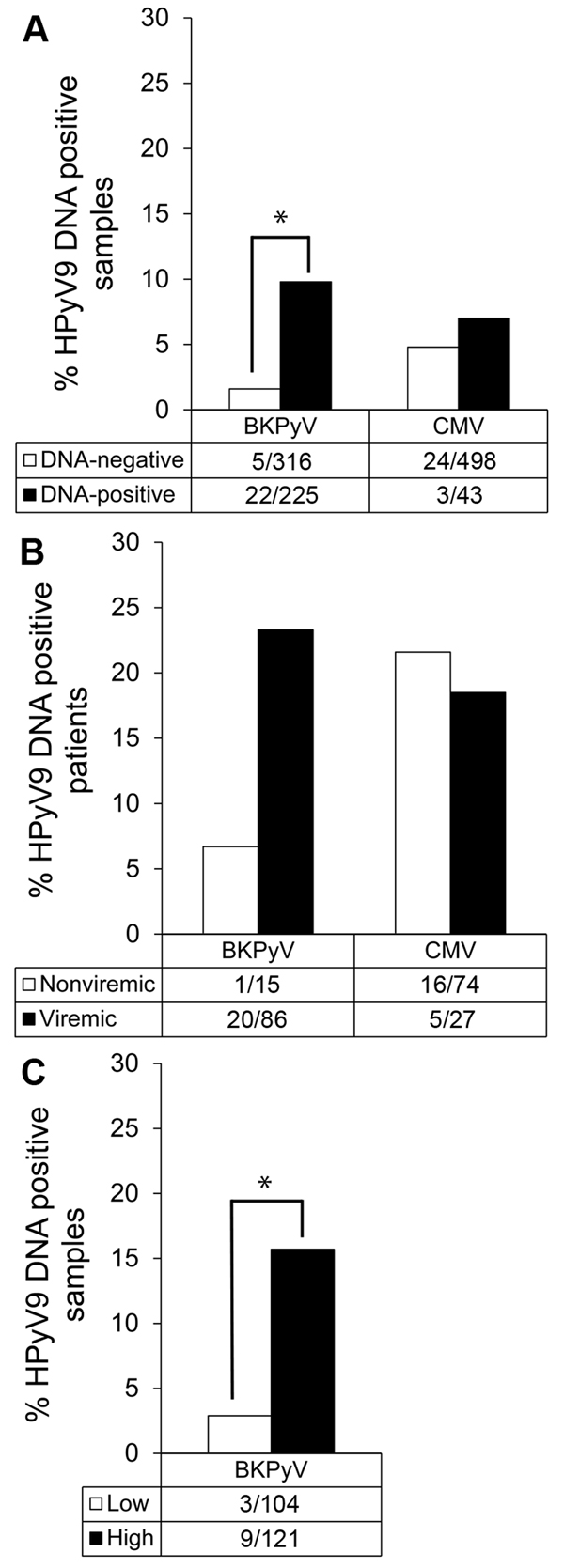Volume 20, Number 6—June 2014
Research
Human Polyomavirus 9 Infection in Kidney Transplant Patients
Figure 4

Figure 4. Association between human polyomavirus 9 (HPyV9), BK polyomavirus (BKPyV), and cytomegalovirus (CMV) infection among transplant patients, the NetherlandsA) Percentage of HPyV9 DNA–positive samples among samples that tested negative (white bars) or positive (black bars) for BKPyV and CMV DNA; B) percentage of HPyV9 viremic patients among BKPyV- and CMV-nonviremic (white bars) and viremic (gray bars) patients; C) percentage of HPyV9 DNA–positive samples by measured BKPyV load within the same sample: low, <103 copies/mL (white bars) or high, >103 copies/mL (black bars)Values below bars indicate nopersons positive/total notested*Significant (p<0.05 by χ2 test).
Page created: March 28, 2014
Page updated: March 28, 2014
Page reviewed: March 28, 2014
The conclusions, findings, and opinions expressed by authors contributing to this journal do not necessarily reflect the official position of the U.S. Department of Health and Human Services, the Public Health Service, the Centers for Disease Control and Prevention, or the authors' affiliated institutions. Use of trade names is for identification only and does not imply endorsement by any of the groups named above.